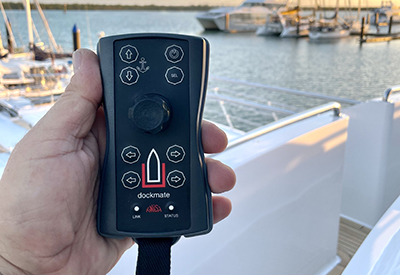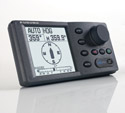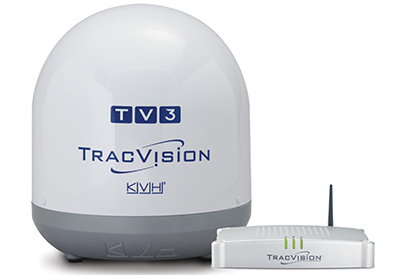Volvo Penta Launches Integrated Assisted Docking System

Jan 14, 2021
On Monday, Volvo Penta announced the availability of their fully integrated assisted docking system at the Consumer Electronics Show, held virtually this year.
The Assisted Docking system integrates a software layer developed in house with the company’s GPS-based Dynamic Positioning System and proprietary Inboard Performance Systems (IPS) for a complete package including HMI (human-machine interface) at the helm, electronics via the engine, propulsion systems and sensors, and advanced navigation processing power for a much easier boating experience, even in rough conditions.
“When we launched our joystick technology in 2006, the maneuvering and control functionality it brought to leisure boating shook up the marine industry – delivering game-changing innovation is in our DNA,” explains Anders Thorin, Product Manager Electronics at Volvo Penta. “From our Electronic Vessel Control (EVC) system, which connects and manages the internal communications between the engine and driveline, joystick and display screen so the driver can control everything from the joystick – to our Dynamic Positioning System (DPS), which automatically maintains a boat’s heading and position, even in rough conditions – to today with the release of the Assisted Docking system, we take the next step in easy boating and continue our long-held ambition to make docking a boat easier for a more enjoyable boating experience.”
Take a look at the video.
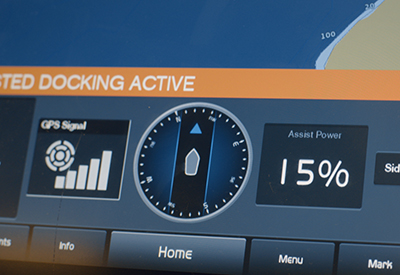
How to dock a boat with the Assisted Docking system
The Assisted Docking system consists of the joystick that controls the steering input and the GPS-based Dynamic Positioning System antenna to know the exact position and heading. The captain maneuvers the vessel with the joystick – thereby informing the system which direction it should head in and at what speed.
If you move the joystick forward, the system lays out a path straight forward from the boat and the boat starts to follow a straight line with the indicated speed. The boat docking system also takes into account certain external forces (i.e. wind, current) and the EVC system – upgraded with in-house developed software – compensates to ensure the boat follows the captain’s intentions. It does this by calculating drive angles and thrust, then acts on the drift and moves the boat back to its intended course. The boat docking system keeps this course by constantly fine-tuning the steering angles and thrust.
The Assisted Docking system integrates a software layer developed in house with the company’s GPS-based Dynamic Positioning System and proprietary Inboard Performance Systems (IPS) for a complete package including HMI (human-machine interface) at the helm, electronics via the engine, propulsion systems and sensors, and advanced navigation processing power for a much easier boating experience, even in rough conditions.
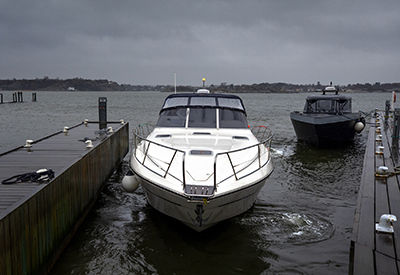
How to dock a boat with Volvo Penta’s Assisted Docking system
The Assisted Docking system consists of the joystick that controls the steering input and the GPS-based Dynamic Positioning System antenna to know the exact position and heading. The captain maneuvers the vessel with the joystick – thereby informing the system which direction it should head in and at what speed.
If you move the joystick forward, the system lays out a path straight forward from the boat and the boat starts to follow a straight line with the indicated speed. The boat docking system also takes into account certain external forces (i.e. wind, current) and the EVC system – upgraded with in-house developed software – compensates to ensure the boat follows the captain’s intentions. It does this by calculating drive angles and thrust, then acts on the drift and moves the boat back to its intended course. The boat docking system keeps this course by constantly fine-tuning the steering angles and thrust.
It is a technical feat to give the driver an easier boating experience with more precise steering and control. The captain is still needed at the helm, but Volvo Penta’s Assisted Docking system is constantly compensating for engine input and engine and drive output to help ensure the boat moves as he or she intends. Everything is designed to work together. It is human-machine interaction at its best.
“Assisted Docking is a hybrid between automated docking and manual docking,” says Ida Sparrefors, Director of Autonomous Solutions and New Business Models at Volvo Penta. “Even though, in some ways, it would have been easier to implement full automation, the beauty of this system is that it gives the captain enhanced control. With our team of experts – from software developers to test drivers – we have made it behave intuitively in all situations, so that anyone can feel like a seasoned captain.”
The Assisted Docking system will be available in spring 2021 for installation on new boat models, as an upgradeable option for Volvo Penta IPS-equipped motor yachts sized 35ft to 120ft long, and as a retrofit – which will require a software upgrade and new antenna – for existing Volvo Penta IPS-powered boats.
Visit Volvo Penta here.


